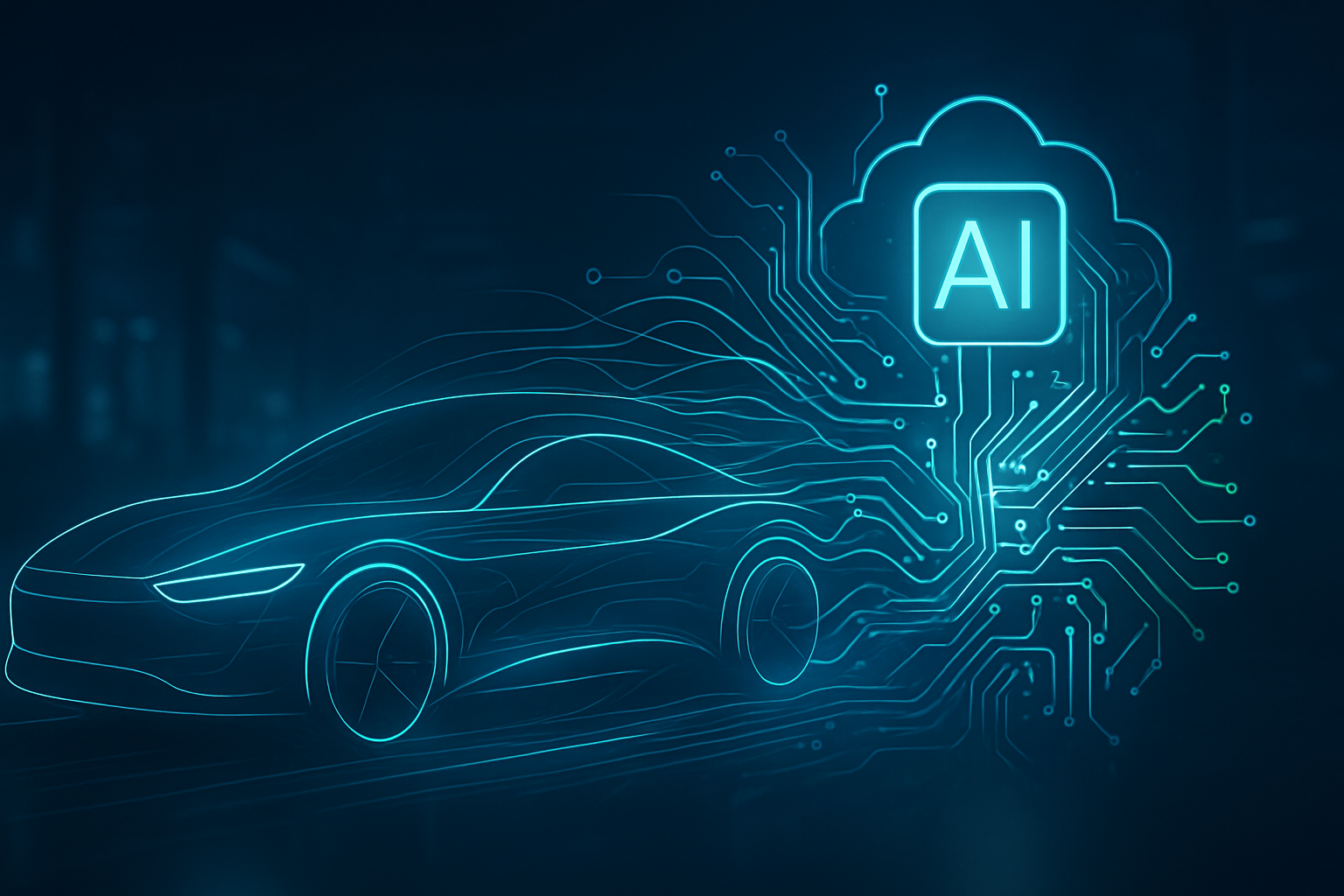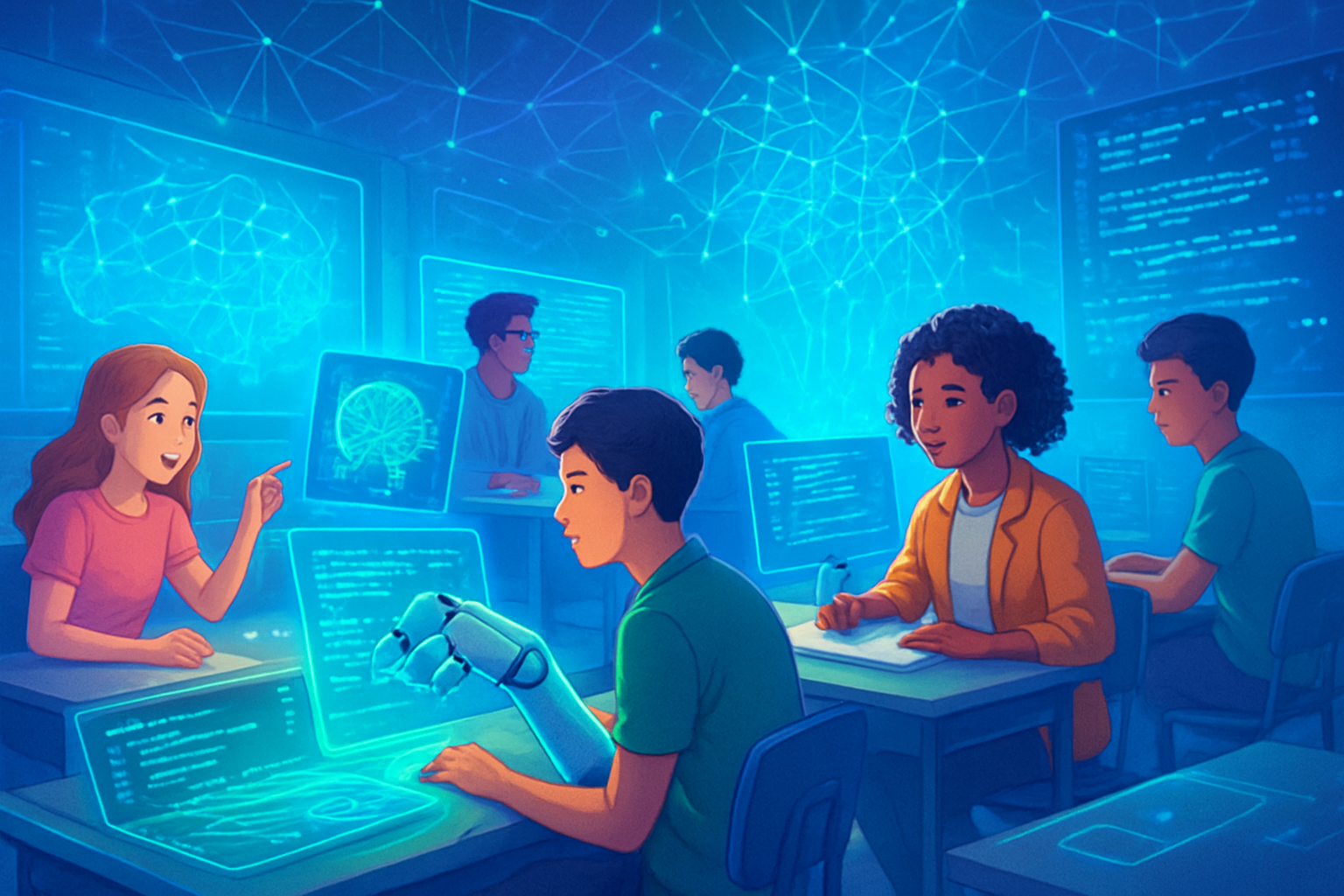The 2025 holiday season stands as a landmark moment in the evolution of retail, marking a profound shift where Artificial Intelligence (AI) has transitioned from a supporting technology to an indispensable architect of the consumer shopping experience. This year, AI is not merely enhancing but fundamentally reshaping how individuals discover, evaluate, and purchase gifts, driven by an increasing consumer reliance on intelligent tools for convenience, confidence, and control in their purchasing decisions. From hyper-personalized gift recommendations to autonomous shopping agents, AI is redefining the festive retail landscape, making the search for the perfect present less daunting and more tailored than ever before.
This transformative integration of AI is particularly evident in personalized gift-giving and streamlined decision-making. Consumers are increasingly turning to AI chatbots as sophisticated personal shoppers, engaging in natural language conversations to uncover recipient preferences and generate highly relevant suggestions based on vast datasets of interests, past purchases, and browsing history. Beyond mere recommendations, generative AI is enabling the creation of truly unique and customized gifts, from AI-powered artworks to personalized content for gift cards. Simultaneously, AI is empowering shoppers to navigate the holiday rush with unprecedented ease, offering efficient product research, comparison tools, and immersive experiences like virtual try-ons, all while mitigating decision fatigue. For retailers, this means leveraging AI for everything from demand forecasting and inventory management to dynamic pricing, ensuring products are available and delivered efficiently, thereby indirectly streamlining the consumer journey.
The Invisible Engine: Technical Deep Dive into AI's Retail Revolution
The 2025 holiday retail season showcases a significant leap in AI capabilities, with advanced solutions delivering real-time, context-aware, and emotionally intelligent personalization across all customer touchpoints. These advancements move far beyond previous approaches, generating considerable excitement within both the AI research community and the industry.
Modern Natural Language Processing (NLP) models, often powered by large language models (LLMs), are at the forefront, enabling AI shopping assistants and virtual agents to engage in sophisticated, human-like conversations. These agents, unlike earlier rule-based chatbots, understand context, predict user intent, and deliver adaptive responses by integrating deeply with Customer Data Platforms (CDPs) and recommendation engines. For instance, OpenAI’s new ChatGPT Shopping Research tool, launched on November 24, 2025, exemplifies this by offering comprehensive, contextually rich buying guides and product comparisons. Voice commerce, driven by advanced NLP, is also reshaping interactions, allowing customers to use voice assistants to find products and complete purchases.
Computer Vision (CV) is enhancing product discovery and customer engagement. Visual search tools allow customers to upload images to find similar products across various retailers. Augmented Reality (AR) experiences, particularly virtual try-on features for fashion and beauty, have matured significantly, allowing shoppers to visualize products in their own environment, boosting confidence and reportedly reducing returns by as much as 40% for size-sensitive items. This differs from previous, less accurate visual search and nascent AR applications.
Recommendation Engines in 2025 are driven by advanced machine learning and predictive analytics, moving beyond basic collaborative filtering. They leverage behavioral, transactional, and contextual data, including real-time browsing and seasonal patterns, to deliver hyper-personalized, dynamic product recommendations. These engines employ deep learning algorithms that understand individual preferences at a much deeper level than older systems, adapting recommendations instantly to changing user behavior or market signals.
Crucially, Generative AI is a cornerstone of this year's personalization. It's used to create unique marketing messages, hyper-personalized product descriptions, and dynamic website content that adapts in real-time to shopper preferences. Unlike traditional AI that predicts outcomes, generative AI creates new and original content, allowing for unprecedented levels of customization and creativity in retail experiences, enabling brands to move beyond generic automation to craft emotional, data-driven interactions.
Behind the scenes, Predictive Analytics for inventory and demand forecasting, powered by AI, analyzes historical sales data, market trends, and even external factors like weather to forecast demand with remarkable accuracy. This allows retailers to optimize stock levels and anticipate disruptions, reducing waste and lost sales—a significant improvement over manual forecasting methods. AI also drives Dynamic Pricing and Promotions, adjusting prices in real-time based on market conditions, competitor pricing, and demand fluctuations, optimizing profit margins while maintaining competitiveness.
Initial reactions from the AI research community are a mix of excitement and caution. While acknowledging the potential of foundation models and agentic AI, researchers emphasize concerns regarding algorithmic bias, data privacy, and the need for Explainable AI (XAI) to foster trust. Industry experts, on the other hand, express high expectations for ROI, with hyper-personalization expected to increase conversion rates by 15-25% and average order values by 20-35% during holiday periods. However, they also highlight implementation challenges, particularly regarding data quality and integration, and stress the importance of ethical AI practices to build consumer trust, which is now considered the "new currency" in AI-driven retail.
Reshaping the Retail Powerhouses: Company Implications and Competitive Edge
The pervasive integration of AI into holiday retail is profoundly impacting AI companies, tech giants, and startups, reshaping the competitive landscape and consumer experience. This season, AI is not just a tool but a central engine for personalized shopping and streamlined decision-making.
Specialized AI firms are experiencing a boom, providing the foundational technologies and customized solutions that power the retail sector's AI transformation. Companies offering advanced algorithms for hyper-personalization, predictive analytics, computer vision, natural language processing, and generative AI tools are in high demand. Those that can create "retail-specific AI personas" or "Personal Language Models" tailored to a retailer's unique data stand to gain significant market share by offering precise, contextual responses while ensuring enterprise-grade security.
Major tech companies like Amazon (NASDAQ: AMZN), Google (NASDAQ: GOOGL), Microsoft (NASDAQ: MSFT), Salesforce (NYSE: CRM), and Shopify (NYSE: SHOP) are leveraging their extensive resources, cloud infrastructure, and existing customer bases to deeply integrate AI into their commerce platforms. Amazon continues to lead with innovations like "Just Walk Out" technology and AI agents that monitor prices and execute purchases based on user budgets. Google has enhanced its search capabilities with "Shop with AI Mode" features, including virtual try-on and AI agents, and offers AI-driven insights for retailers. Salesforce predicts AI-driven product discovery will account for $260 billion in online sales and $1.6 trillion in in-store sales this holiday season, with 35% of retailers using agentic AI to boost productivity through tools like Einstein AI Commerce and Einstein Copilot. Shopify integrates AI through tools like Sidekick, an AI-powered commerce assistant. These giants benefit from their ability to offer end-to-end AI solutions, reinforcing their positions as indispensable partners for retailers.
Innovative startups specializing in niche AI applications for retail are finding fertile ground for rapid growth. This includes companies focused on AI-driven inventory optimization, store automation, customer analytics, visual search, and agentic shopping platforms. Startups that can quickly develop and deploy specialized AI tools for specific retail challenges, such as those creating "AI Twins" for personalized try-ons, are attracting significant investment. However, they face challenges in marketing visibility against tech giants, with many e-commerce companies worrying AI search could make it harder for new customers to find their products.
AI advancements are fundamentally disrupting traditional retail paradigms. AI-powered search engines, visual search, and conversational AI assistants are replacing traditional search methods, challenging conventional SEO strategies and pushing businesses towards "generative engine optimization" (GEO). Generic marketing campaigns are becoming less effective as hyper-personalization takes center stage. Basic chatbots are evolving into sophisticated "agentic AI" shopping assistants, reducing the need for human intervention in routine customer interactions. Operationally, AI is disrupting manual processes in demand forecasting, inventory management, and supply chain optimization.
Companies that strategically embrace AI gain significant market positioning. Delivering hyper-personalized shopping experiences is now a baseline expectation, fostering customer loyalty and driving conversions, with retailers excelling in AI-driven personalization seeing up to 40% more revenue growth. AI also enables operational efficiency and cost reduction through automation and predictive analytics, making companies extensively using AI more than twice as likely to report increased profitability. Enhanced Customer Experience (CX) through seamless, intuitive, and emotionally intelligent shopping journeys is another key advantage. Ultimately, AI has become a "competitive necessity" for retailers to meet evolving consumer expectations and navigate fierce e-commerce competition.
A New Baseline: Wider Significance and Societal Implications
The 2025 holiday shopping season solidifies AI's role as an "invisible engine" within the retail sector, marking a significant evolution from earlier AI applications and deeply integrating it into the broader AI landscape. This pervasive influence, however, also raises crucial societal questions.
The shift signifies that AI is no longer a novelty but a baseline expectation for customers, fostering feelings of happiness, less anxiety, and more control during the shopping journey. This is a critical component of the rapidly expanding global AI landscape, with the AI in retail market projected for significant growth. Generative AI's dominance, particularly LLMs, is central to this wave, enabling automated content creation, hyper-personalized marketing, and sophisticated conversational interfaces. Beyond the consumer front-end, AI is transforming back-end operations through smart inventory and demand forecasting, dynamic pricing, and supply chain optimization, leading to reduced costs and improved efficiency. AI is also enhancing fraud detection and even being leveraged for sustainability initiatives in retail.
However, the pervasive integration of AI into holiday retail raises significant societal impacts and concerns. Privacy Concerns are paramount, as the extensive collection and analysis of customer data necessary for AI-driven personalization pose considerable risks. Opaque algorithms make it difficult for consumers to understand how decisions are made, and the sheer volume of data increases the risk of breaches. Retailers face the challenge of balancing personalization with ethical data use, requiring transparency, clear consent mechanisms, and robust data protection.
Algorithmic Bias remains a significant concern. If trained on unrepresentative or historically biased data, AI systems can perpetuate and amplify existing societal biases, leading to biased product recommendations or discriminatory dynamic pricing. Such biases can limit consumer choice, create unfair systems, and erode trust.
Furthermore, Job Displacement is a looming concern. AI's increasing capabilities, particularly in automation, are expected to lead to significant job displacement in the retail sector and beyond. Estimates suggest that AI could automate a large percentage of retail jobs, especially those involving routine tasks. The World Economic Forum estimates AI could replace 85 million jobs by 2026, with 65% of retail jobs potentially automated by that year. This requires a focus on reskilling and upskilling the workforce to adapt to new roles created by AI.
The current state of AI in holiday retail represents a significant leap compared to earlier milestones. Over two decades ago, Amazon was an early adopter, using rudimentary AI for basic product recommendations. Today's breakthroughs, particularly in generative AI and LLMs, have transformed this landscape from simple "customers who bought this also bought…" suggestions to sophisticated, real-time hyper-personalization that anticipates needs. The evolution has moved from static interactions to human-like conversational commerce and agentic AI that can autonomously act on behalf of the user. AI has transitioned from a supporting backend tool to a central, front-end driver, integral to product discovery and decision-making, creating a new baseline for discovery, trust, and retail success.
The Horizon of Hyper-Personalization: Future Developments in AI Retail
As of November 25, 2025, AI is not merely a futuristic concept but a tangible force actively reshaping how shoppers discover, evaluate, and purchase gifts. This shift encompasses both immediate changes visible in the upcoming holiday seasons and long-term developments that will fundamentally alter the retail landscape.
In the near-term (2025-2026 holiday seasons), consumers can expect an even more personalized and efficient shopping journey. Widespread generative AI-powered chatbots and virtual assistants will become the primary direct interaction, handling customer service, product questions, and order statuses 24/7. Hyper-personalized recommendations will move beyond basic browsing history, leveraging deep learning to understand individual preferences, seasonal trends, and gift-giving contexts. AI-powered search and discovery will see consumers increasingly using LLMs to kickstart their holiday shopping, while enhanced virtual try-ons and 3D product experiences will boost purchase confidence. Behind the scenes, AI will continue to optimize supply chains and logistics through accurate demand forecasting and streamlined warehouse operations, mitigating disruptions.
Looking further ahead (3-5+ years), AI is poised to integrate even more deeply. The long-term vision includes Autonomous Shopping Agents capable of acting semi- or fully autonomously across the entire shopping journey, potentially outsourcing holiday shopping almost entirely. Seamless Omnichannel Integration will ensure a consistent and personalized customer journey whether shopping online, on mobile, or in a physical store, with AI systems capturing interactions across all touchpoints. Intelligent in-store environments will feature AI-powered displays and smart kiosks. Experts predict AI will transition from a mere tool to an emotional companion, reducing stress and enhancing happiness by simplifying complex decisions.
Potential applications on the horizon include dynamic pricing and promotions adjusting in real-time, AI-driven gift inspiration that generates creative ideas beyond simple recommendations, and agent-assisted local shopping, where AI calls local stores to verify product availability. Automated price tracking and purchase by AI agents will become more common, and generative AI will be used by retailers for highly personalized marketing content at scale. AI will also augment retail staff with tools for optimized scheduling and personalized onboarding.
Despite this immense potential, several challenges need to be addressed. Data Quality and Integration remain paramount, as poor data can lead to inaccurate predictions. The Complexity of Implementation requires specialized expertise and ongoing support. Consumer Trust and Privacy Concerns are crucial, demanding transparency and responsible data practices. Retailers must avoid "gimmicky" AI and ensure tools genuinely enhance the shopping experience. The "Attribution Gap" for marketers, where AI agents influence discovery, makes measuring ROI difficult. Finally, maintaining the Human Element is vital, balancing AI efficiency with the irreplaceable value of human interaction, especially for complex issues or emotional aspects of gift-giving.
Experts unanimously agree that AI will be a dominant force, with Salesforce projecting AI to influence $260 billion in online sales and $1.6 trillion in in-store sales during the 2025 holiday season. Rapid consumer adoption and retailer prioritization of AI are expected, with nearly all large U.S. retailers (97%) planning to use AI to enhance the shopping experience. Some experts predict AI could shift customer loyalty from specific brands to the "outcomes" delivered by AI agents, necessitating that retailers articulate their unique value propositions clearly. The advice for retailers is to adopt AI methodically, focusing on trust and empathy, ensuring AI experiences are seamless, reliable, and truly add value over the long term.
The AI-Fueled Holiday: A Comprehensive Wrap-Up
The 2025 holiday retail season has undeniably cemented Artificial Intelligence as an indispensable co-pilot for both consumers and retailers. It marks a pivotal moment where AI has moved from niche utility to mainstream adoption, from experimental applications to deeply embedded, mission-critical functions. This year, AI has solidified its role as the "invisible engine of retail," powering how consumers discover value, make choices, and build trust.
Key takeaways from this holiday season include the widespread consumer adoption of AI for gift ideas, price comparisons, and even direct purchases, with a significant majority of shoppers trusting AI recommendations. Hyper-personalization has become the new standard, driven by AI's ability to understand individual preferences and contexts. Conversational and agentic AI are transforming customer interactions, offering 24/7 support and even autonomous purchasing capabilities. Operationally, AI is optimizing dynamic pricing, inventory management, and supply chains, leading to enhanced discovery and trust for consumers. Retailers are also seeing higher returns on ad spend through AI-powered marketing.
In AI history, the 2025 holiday season is a watershed moment, described as the "first truly AI-fueled holiday shopping season." AI is no longer an optional add-on but "the new baseline for discovery, trust, and holiday retail success." The rapid, intuitive acceptance of AI to alleviate shopping stress and decision fatigue highlights its maturity and consumer readiness, signifying a profound evolution from earlier, rudimentary AI applications.
The long-term impact of AI on retail will be transformative and enduring. Expect ubiquitous hyper-personalization, where AI anticipates individual shopper needs in real-time across every touchpoint. The rise of agentic commerce and "neural shopping" will see AI agents managing workflows and making purchases autonomously, integrating shopping seamlessly into everyday life. AI will continue to drive unprecedented operational efficiency and profitability while evolving consumer expectations for smarter, faster, and more ethical AI-driven interactions. Addressing concerns around data privacy, potential job displacement, and ensuring transparent and ethical AI practices will be paramount for maintaining consumer trust.
What to watch for in the coming weeks and months includes the further evolution and uptake of agentic AI, particularly regarding consumer comfort levels with autonomous spending. The necessity for retailers to maintain dynamic, high-quality product feeds optimized for AI workflows will intensify. Look for the refinement of predictive intent engines that anticipate customer wants based on contextual data, and the further integration of AI copilots to empower retail associates. Monitoring the "say-do gap" in consumer spending against stated intentions will provide insights into the true economic landscape. Finally, the emergence of real-time sustainability scores and enhanced traceability in supply chains, driven by AI, will be crucial as consumers demand ethical options. The 2025 holiday season has set a new precedent for how technology enhances the consumer shopping journey, laying the groundwork for an even more AI-driven future in retail.
This content is intended for informational purposes only and represents analysis of current AI developments.
TokenRing AI delivers enterprise-grade solutions for multi-agent AI workflow orchestration, AI-powered development tools, and seamless remote collaboration platforms.
For more information, visit https://www.tokenring.ai/.









